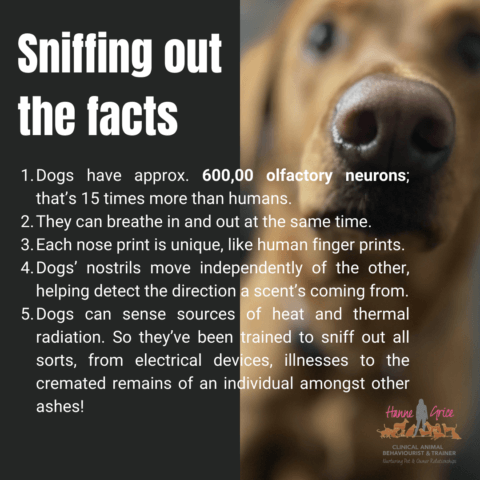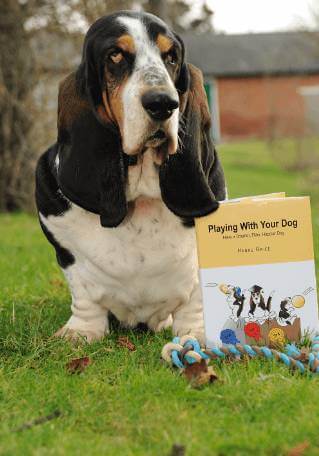
Dogs’ noses are nothing short of extraordinary. Serving as their primary gateway to the world, these powerful olfactory organs are equipped with around 300 million olfactory receptors, compared to a mere 6 million in humans. This enables them to detect odours at concentrations nearly 100 million times lower than what our noses can manage.
Just like human fingerprints are unique, so are dogs’ noses – each nose print it different to another. And, although dogs interact with their world via all of their senses, it is their super-scenting ability that is, arguably, their the most important sense. That is because it provides information not only about their environment at that moment in time, but it also allows dogs to detect signals from the past; helpful for survival in determining the presence of prey, threat or unfamiliar/novel smells (Kokocińska-Kusiak et al., 2021). Furthermore, a study by Andrews et al. (2022) provided the first evidence of a direct connection between the dog’s brain and nose, highlighting how the dog integrates olfactory stimuli into their cognitive function.
To celebrate our four-legged friends powerful yet cute noses, here are five more facts you might not have known about dogs’ noses!
- Dogs have about 600,00 olfactory neurons. That’s 15 times what humans have.
- Dogs can breathe in and out at the same time, meaning they can smell continuously.
- The shape of their nostrils helps them breathe in air from the front and push out used air, creating a momentary low-pressure area in front of the nose, making it easier to track smells.
- Unlike humans, dogs can move their nostrils independently of the other, this helps with detecting the direction a scent is coming from.
- Dogs can sense sources of heat and thermal radiation thanks to their impressive olfactory system. This has enabled them to be trained to sniff out all manner of things, from electrical devices, illnesses including cancer with around a 97% accuracy rate, to the cremated remains of an individual amongst other ashes (Greenberg, 2021).
Dogs’ noses blend incredible sensitivity with a level of detail that far surpasses our own capabilities. So, the next time your dog is engrossed in sniffing a tree or a lamppost, let them – it’s how they ‘see’ their world.
[Photo: Thanks to Maple for letting me take her photo!]
References
- Andrews, E.F., Pascalau, R., Horowitz, A., Lawrence, G.M., Johnson, P.J. (2022) Extensive Connections of the Canine Olfactory Pathway Revealed by Tractography and Dissection. Journal of Neuroscience. 42 (33) 6392-6407. doi:10.1523/JNEUROSCI.2355-21.2022
- Greenberg, A. (2021) Dogs sniff out cremation ashes amid wildfire destruction. Nature: Nova – PBS. [Accessed 19th March 2023]. Dogs sniff out cremation ashes amid wildfire destruction | NOVA | PBS
- Kokocińska-Kusiak, A., Woszczyło, M., Zybala, M., Maciocha, J., Barłowska, K., Dzięcioł, M. (2022) Canine Olfaction: Physiology, Behavior, and Possibilities for Practical Applications. Animals (Basel). 11(8):2463. doi: 10.3390/ani11082463
Learn more about our classes

Get Hanne's book, clothing and more
Hanne has a number of publications including her book Playing With Your Dog to help owners work out the games that are best suited for their pet to play throughout his life, from puppyhood to old age, available from Amazon. Check out Hanne's range of contemporary casuals The Collection – for pet lovers made from recyclable, organic materials that are sustainably sourced.

